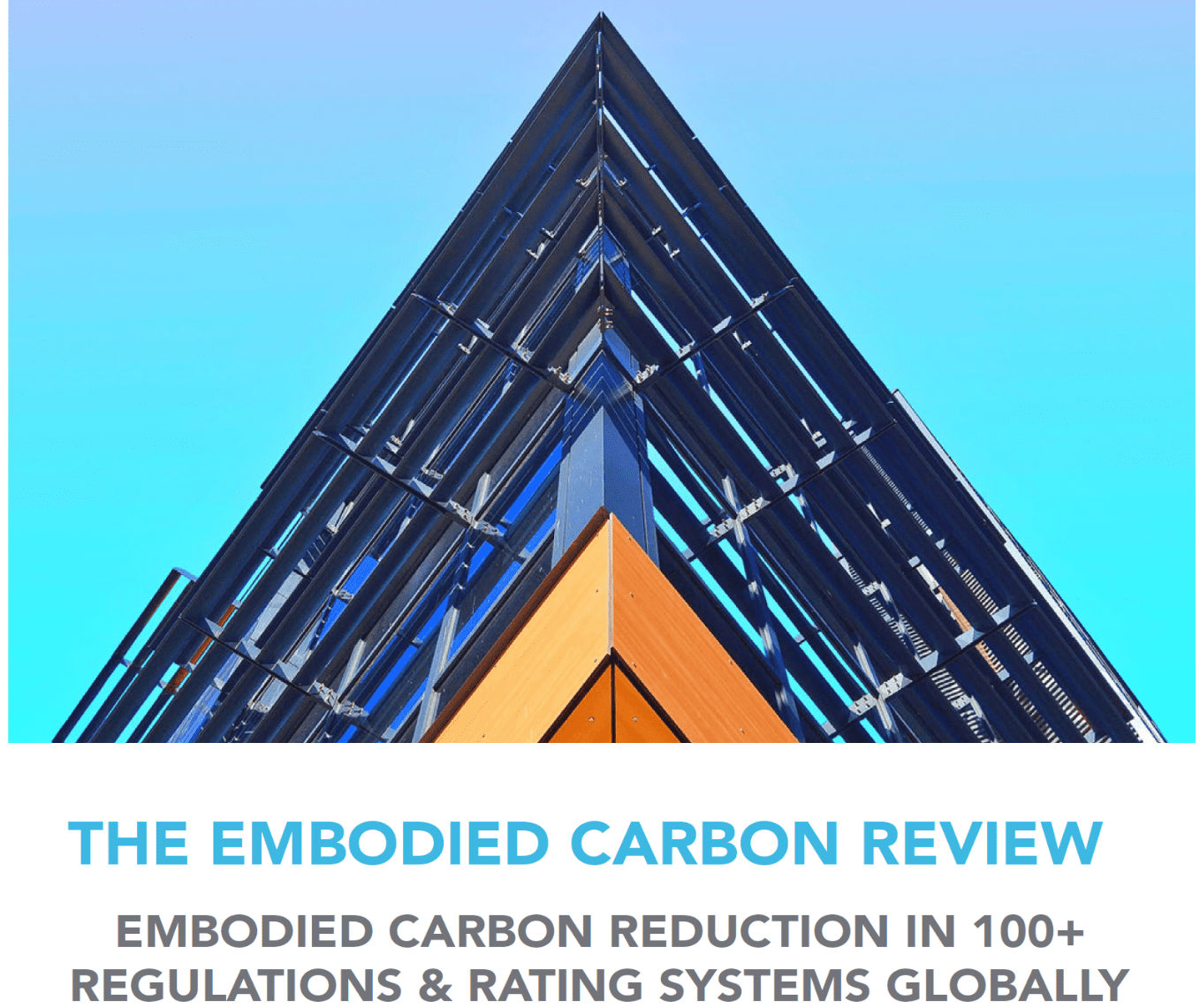The embodied carbon review

Embodied carbon resulting from buildings constructed from today until 2050 is as high as the carbon from their cumulative operating energy demand until 2050, before energy grid decarbonization is considered.
It needs to be included in building codes, possibly aligned with energy codes, and supported by voluntary incentive systems for further improvement. Embodied carbon can be addressed by city-level regulations and incentive programs. The complexity of embodied carbon accounting is reduced by innovative and automated tools, as well as education and experience from working with it in practice.
The review is divided in various sections:
- Overview of embodied carbon reduction methods: This research identified five main methods of addressing embodied carbon. These are, in increasing order of efficiency, carbon reporting, comparison in design, carbon rating, carbon caps, and decarbonization.
- Building embodied carbon reduction systems: This review covers environmental sustainability certifications and regulations applied to construction works that are used at least regionally. The study identified 105 systems that include direct measures for embodied carbon.
- Civil engineering embodied carbon reduction systems: This study identified 20 infrastructure-relevant systems.
- Comparison of regional differences: between carbon reduction and cap/rating methods, incentives and the use of product EPDs.
- Best practices for designing embodied carbon targeting policies. This study recommends setting rules and requirements based on standards, and having an open and verification-based process.
- Examples of successful cases.
